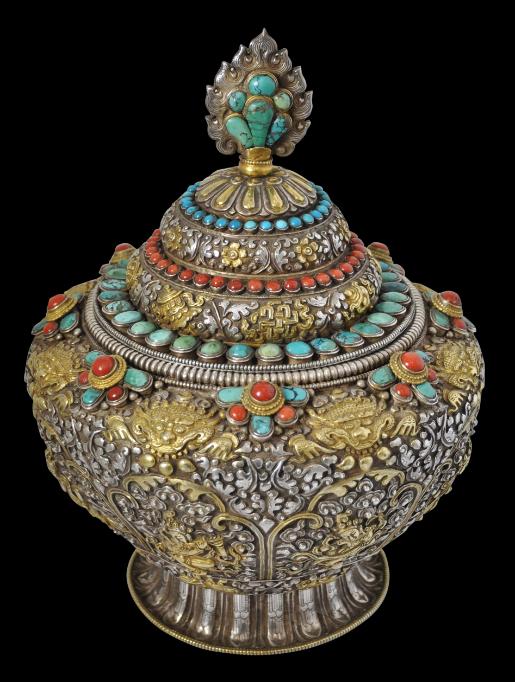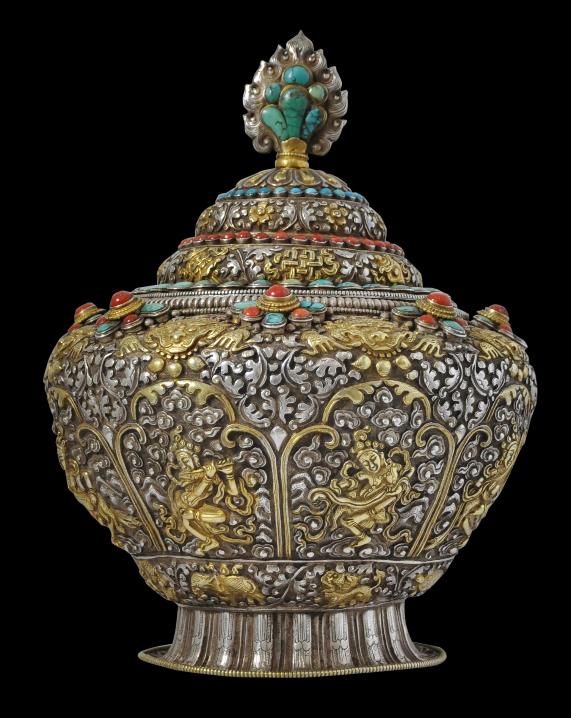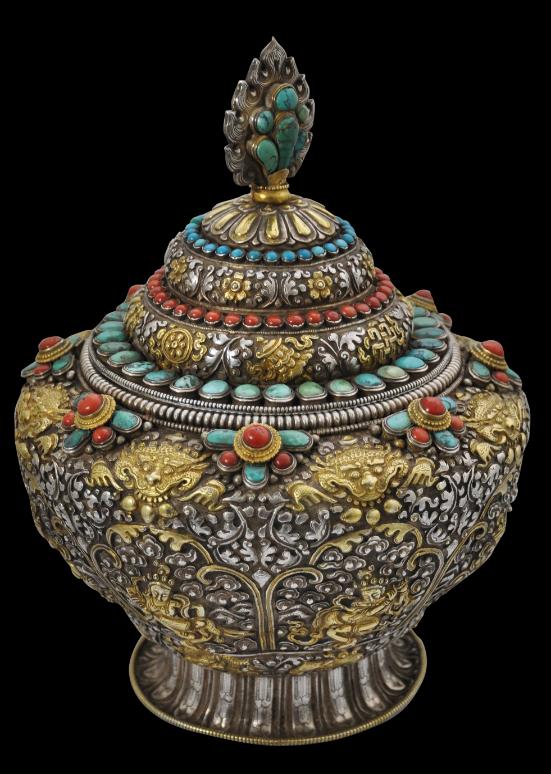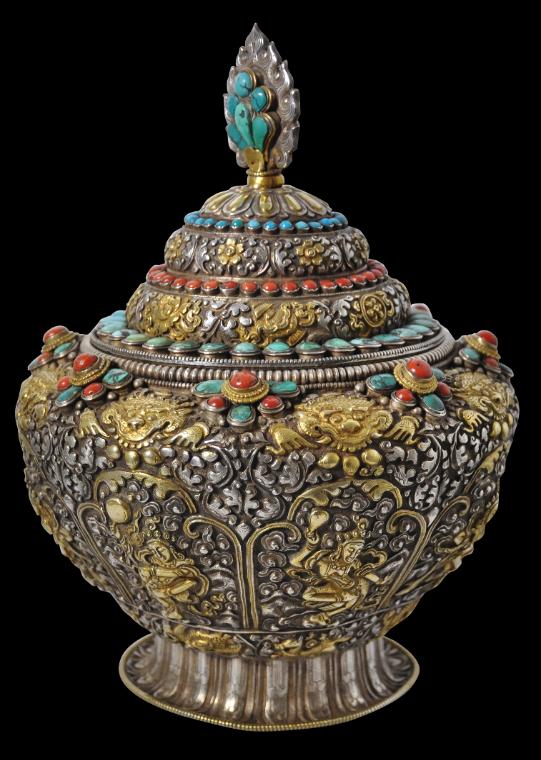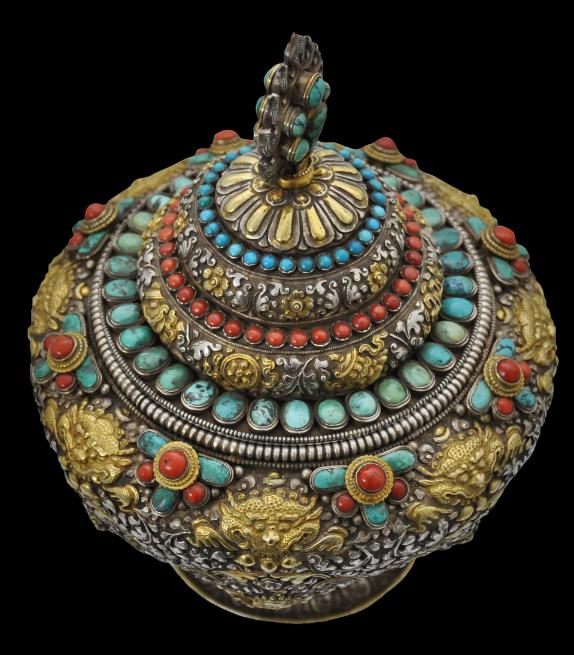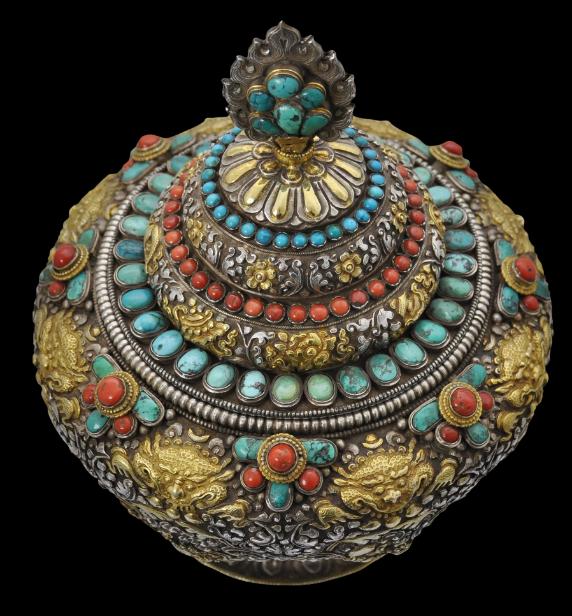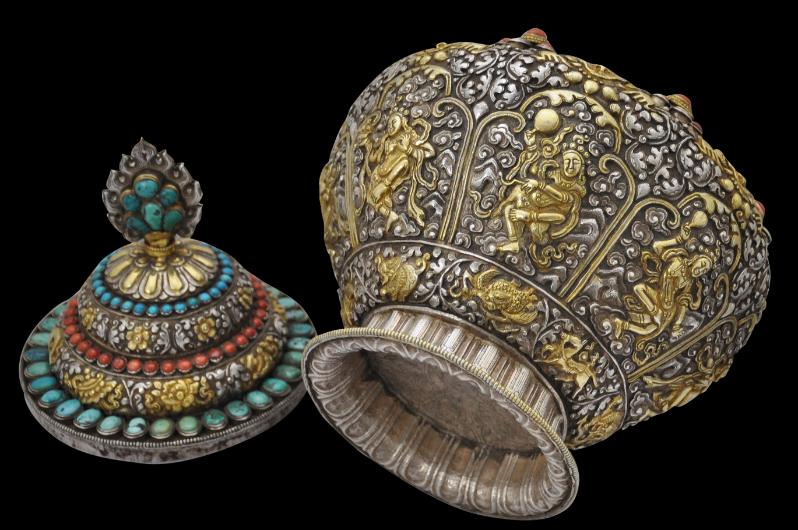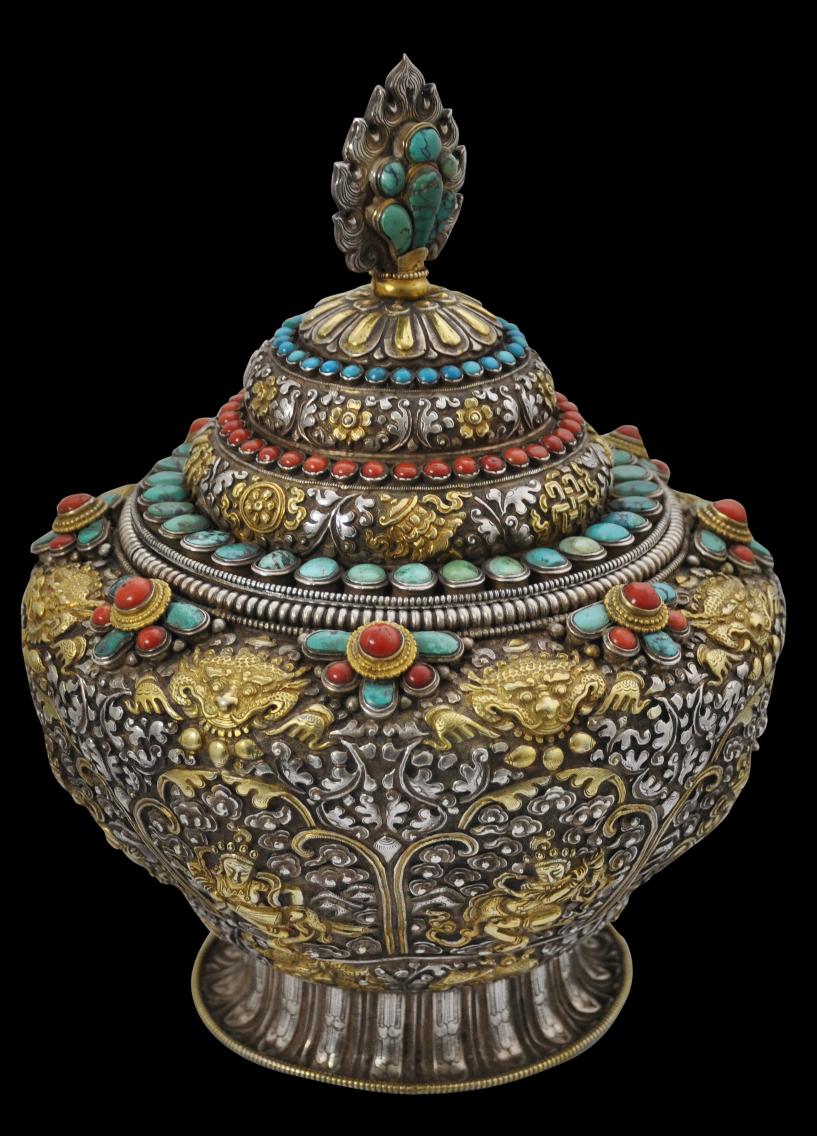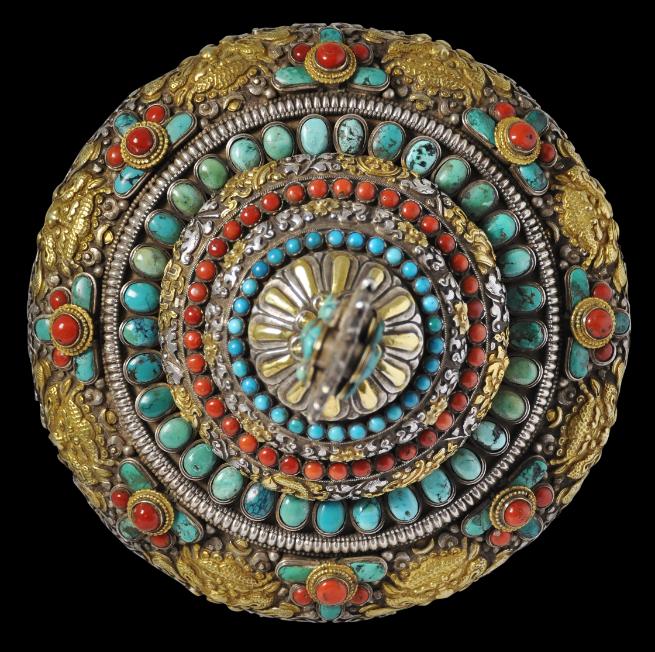
Parcel-Gilt Silver Vase of Immortality with Coral & Turquoise Cabochons, Nepal/Tibet, early 20th century
Parcel-Gilt Silver Vase of Immortality with Coral & Turquoise Cabochons
Nepal/Tibet
early 20th century
height: 26.3cm, diameter: 20cm, weight: 1,214g
This spectacular lidded vase is of solid silver, parcel gilding (gold plating) and has been inset with dozens of turquoise and coral cabochons.
The vase sits on a flared foot. The body is in the form a of flattened sphere. The lid is tiered in a manner that evokes Mount Meru or perhaps a
mandala and rises to a finial shaped as a vase of wish-fulfilling jewels.
The foot has been engraved and chased with lotus petal motifs and as such symbolises an open lotus. The body has been chased with eight cartouches, each decorated with a deity dancing and holding either a musical instrument or an attribute, with each deity highlighted in gold. The background is of stylised clouds and leafy scrolls, all in relief. A frieze of eight gilded
kala or kirtimukha masks is above this, interspersed by eight prominent plaques studded with coral and turquoise cabochons.
The rim of the vase follows and this is marked with a rim of pearled silver. The lid sits in the rim, and this too has a pearled silver edge. The tiers of the lid are decorated in relief with Himalayan Buddhistic symbols and foliage and flowers. They finish with a lotus petal top from which the finial rises, which is decorated on both sides with large panels of inland turquoise.
The chasing and parcel-gilding work on this vase is very similar to that one a ritual silver skull cup illustrated in Ghose (2016, p. 88).
The form of the vase is similar to those commissioned for long life rituals and were associated with Amitayas, the Buddha of Infinite life. Pal (2004, p. 269) illustrates a gilded copper vase of immortality, which although attributed to the late seventeenth century, bares some similarity to the example here.
The vase might also has served as a visual form of a mandala during certain rituals, or it might have also been filled with consecrated water for sprinkling during rituals.
The vase is in excellent condition without losses or repairs.
References
Ghose, M. (ed.), Vanishing Beauty: Asian Jewelry and Ritual Objects from the Barbara and David Kipper Collection, Art Institute of Chicago, 2016.
Pal, P.,
Himalayas: An Aesthetic Adventure, The Art Institute of Chicago, 2004.
Provenance
private collection, London.
Inventory no.: 3635
SOLD

